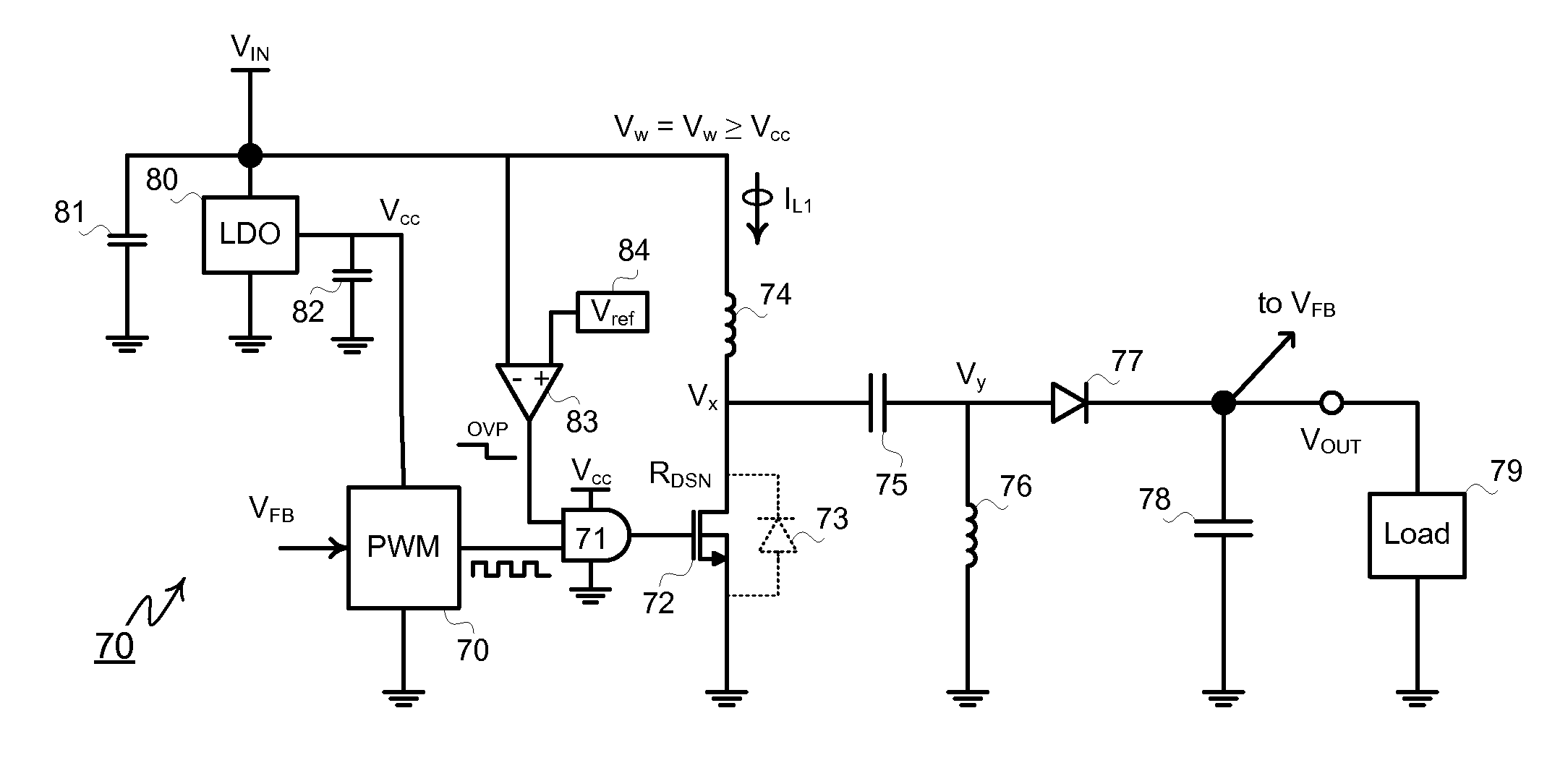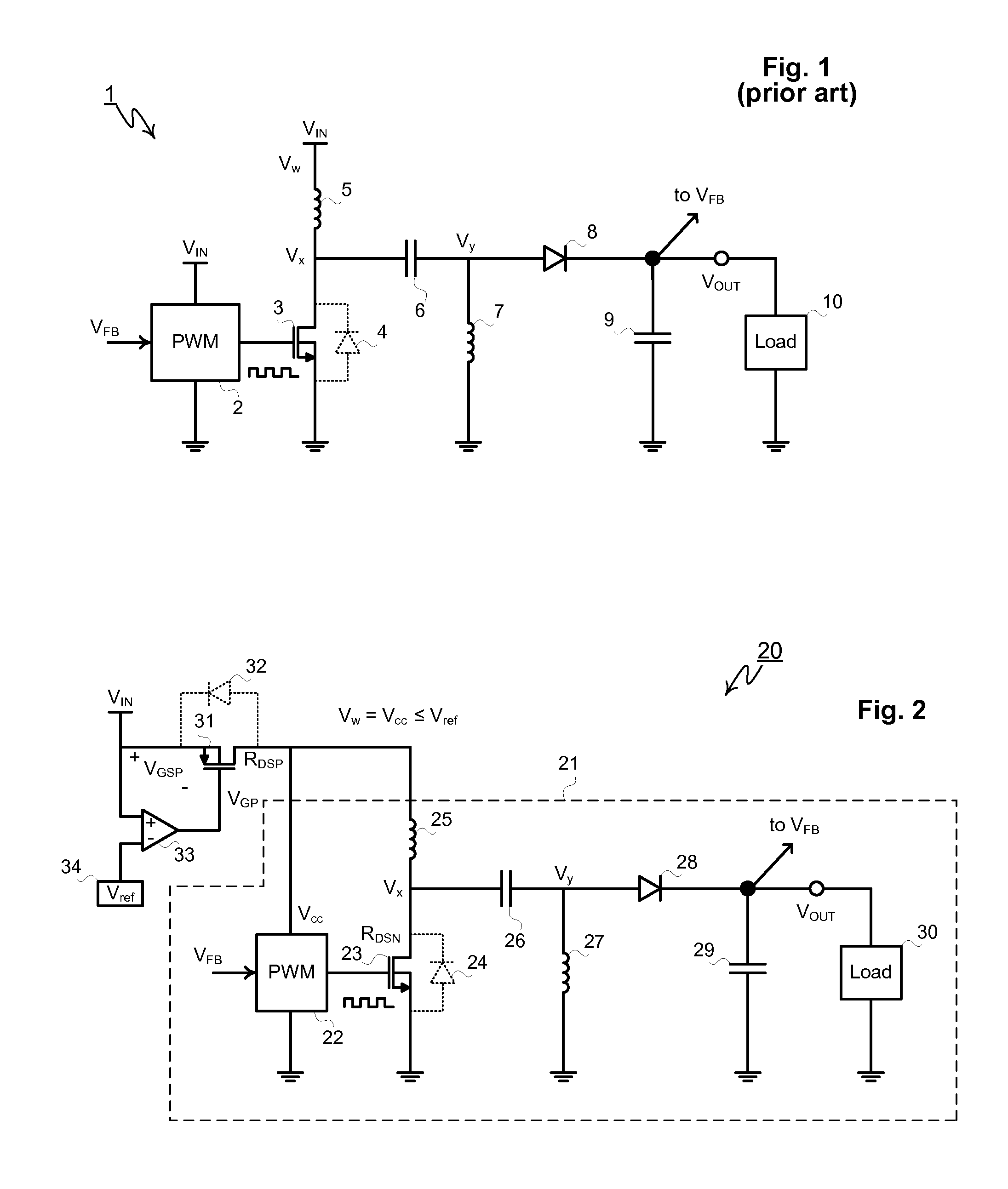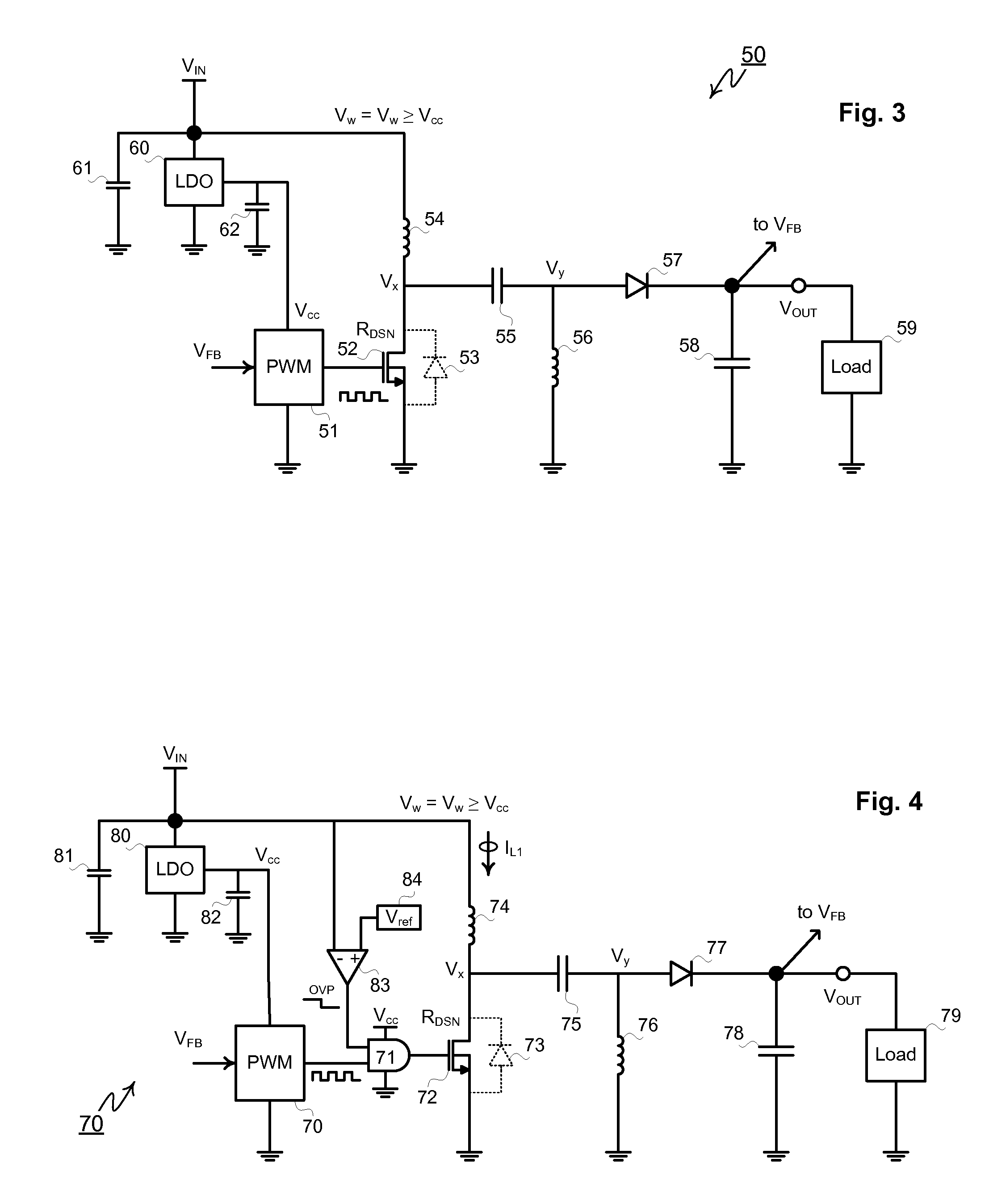High Voltage SEPIC Converter
a high-voltage sepic converter and converter technology, applied in the direction of electric variable regulation, process and machine control, instruments, etc., can solve the problems of inability to step up and step down regulation, damage to the device, and inability to survive high input voltag
- Summary
- Abstract
- Description
- Claims
- Application Information
AI Technical Summary
Benefits of technology
Problems solved by technology
Method used
Image
Examples
Embodiment Construction
[0020]Over-Voltage-Protected SEPIC
[0021]One means to extend the voltage range of the SEPIC converter is to utilize an over-voltage protection, i.e. OVP, circuit that disconnects the converter from the input in the event the input voltage exceeds a pre-specified value. In converter 20 of FIG. 2, SEPIC converter 21 is protected by P-channel MOSFET 31 controller by comparator 33 which compares the input voltage VIN to a reference voltage Vref. Reference voltage 34 may be implemented using a bandgap reference, Zener diode, a series of forward biased diodes or any other well known voltage reference technique, or a scaled multiple of said voltage. P-channel MOSFET 31 includes reverse-biased intrinsic P-N diode 32 with its anode tied to VIN and its cathode connected to the input to converter 21.
[0022]SEPIC converter 21 comprises a PWM control circuit 22, N-channel power MOSFET 23 with intrinsic drain-to-source diode 24, high-side inductor 25, capacitor 26, low-side inductor 27, rectifier d...
PUM
 Login to View More
Login to View More Abstract
Description
Claims
Application Information
 Login to View More
Login to View More - R&D
- Intellectual Property
- Life Sciences
- Materials
- Tech Scout
- Unparalleled Data Quality
- Higher Quality Content
- 60% Fewer Hallucinations
Browse by: Latest US Patents, China's latest patents, Technical Efficacy Thesaurus, Application Domain, Technology Topic, Popular Technical Reports.
© 2025 PatSnap. All rights reserved.Legal|Privacy policy|Modern Slavery Act Transparency Statement|Sitemap|About US| Contact US: help@patsnap.com



